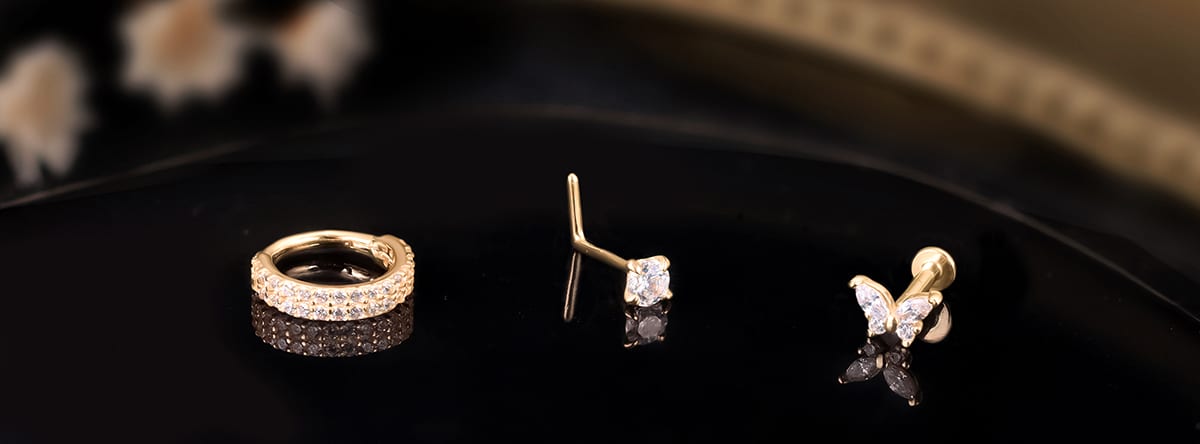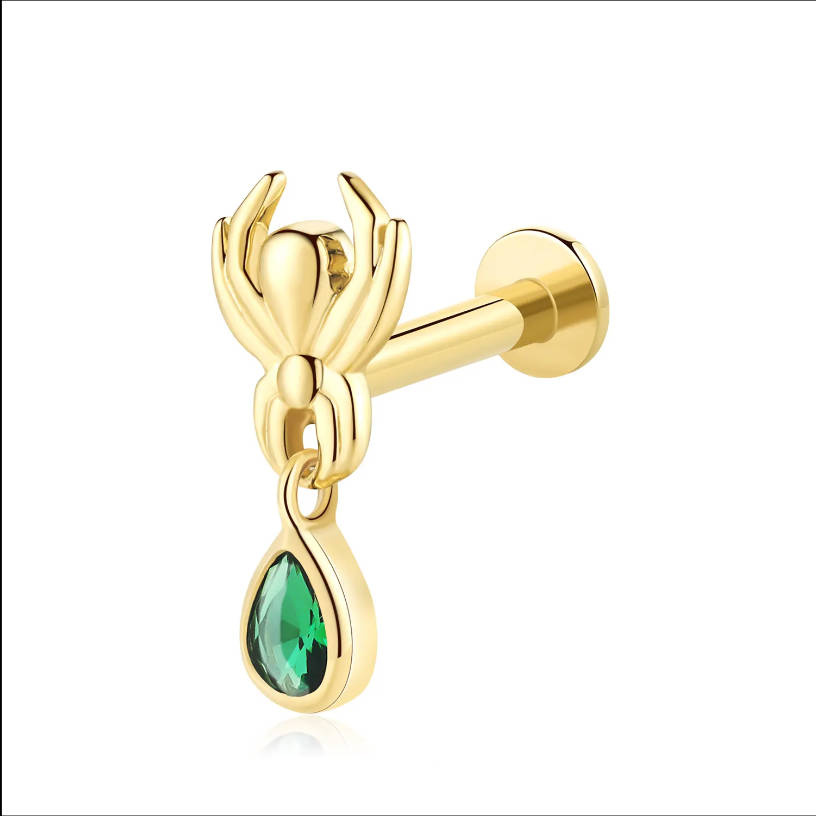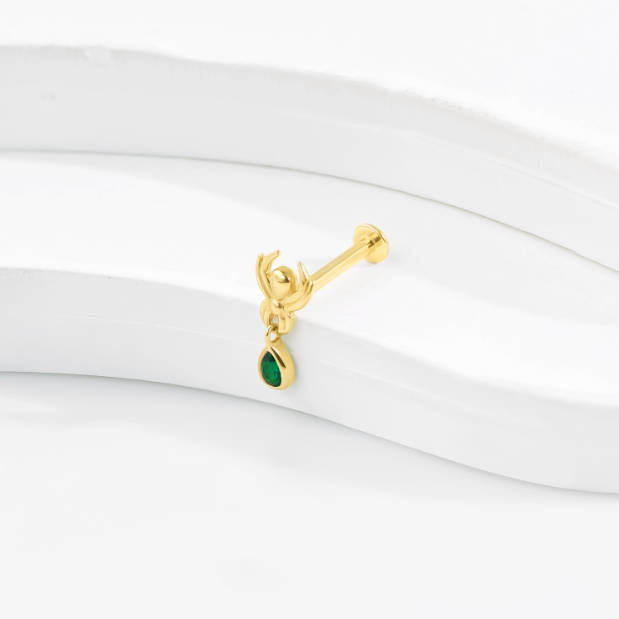Email:wholesale@goldpiercingfactory.com WhatsApp:+14086905740


Bridge pieces stand out for their location at the bridge of the nose showcasing a sense of style and flair, for individuality. They can bring out features and draw focus to the eyes. The cultural importance and trendy allure of bridge pierces add to their distinctiveness. People opt for this piercing style for its daring appeal and capacity to enhance their unique look.
Throughout history bridge pierces have had significance, in cultures and customs. Although they are commonly associated with modern body art the tradition of nose piercing has ancient origins. Many indigenous communities used pierces to symbolize strength or attractiveness. In today’s fashion scene bridge pierces have become trendy as a representation of mainstream culture frequently sported by creatives, musicians, and influencers. Understanding their past contributes depth to this trend.
Not everyone’s nose is suited for a bridge piercing – certain anatomical factors need to be taken into account for an outcome! A defined nose bridge with just the right amount of skin is ideal for jewelry placement to work effectively. Having skin of thickness is also crucial as it promotes proper healing and reduces the risk of any issues arising post-piercing. Meeting with a piercer will assist in assessing whether your anatomy aligns with the requirements, for this type of piercing.
Bridge piercings offer more than a stylish look. They allow for individual expression through different jewelry options that reflect personality traits effectively. These piercings can enhance any style from casual to elegant when done well. Moreover, the healing process is often quick which enables easy style changes and the use of intricate jewelry, in the future.
Taking care of your bridge piercing is crucial to promote a healing journey and prevent any issues from arising down the road. It’s important to follow the aftercare routine to ensure that your piercing stays healthy and comfortable, for the long haul. By heeding expert advice, you can maintain your bridge piercing effectively and enjoy it without any complications or infections.
Taking care of your bridge piercing is essential for its upkeep and healing process. Follow the instructions given by your piercer to keep the area clean and free, from infections. By dedicating time to care and cleanliness as advised by your piercer you’ll ensure a beautiful and healthy piercing in the long run.
When you’re taking care of your bridge piercing it’s important to opt for saline solutions over alcohol or hydrogen peroxide as they can be harsh, on the skin Soak a gauze pad in a saline solution and gently dab it to remove any crust or debris without causing any harm Make sure to clean your piercing twice a day and refrain from touching it without washing your hands first Regular cleaning helps minimize the chances of infections and other issues happening.
During the healing process of your piercings or tattoos, you might notice some problems such as swelling or tenderness which can be taken care of with regular aftercare routines and a bit of patience. If the swelling doesn’t go away consider using a saline compress to ease any discomfort. In case of infections, it’s best to seek advice from your piercer or a healthcare provider, for treatment and ongoing care.
Many experienced piercers emphasize the importance of individualized care regimens tailored to your specific piercing. They recommend investing in quality jewelry like those available at GPF that are less likely to cause irritating reactions. Piercers also suggest routine check-ins to track healing progress and ensure no adjustments are necessary for optimal recovery.

Selecting the jewelry plays a crucial role in enhancing the appeal of your bridge piercing and supporting its well-being at the same time. Different types of jewelry have the power to impact both the healing process and the overall visual appeal; hence it’s important to make choices. In this discussion are different designs and materials explored to aid you in making an informed choice.
When choosing jewelry for your bridge piercing you should think about whether to go with a barbell or a curved one. Straight barbells are usually the pick, for fresh piercings because they’re easy to put in and clean. On the other hand, curved barbells can give your piercing a distinctive look once it’s all healed up opening up some cool styling possibilities. At the end of the day what matters most is that you pick something that feels comfy and suits your anatomy right.
For those seeking a personalized touch, exploring custom gold piercing options can be rewarding. Custom jewelry can be tailored to fit perfectly with your style and enhance the beauty of your bridge piercing. The use of high-quality materials ensures safety and longevity, making this investment worthwhile for any piercing enthusiast.
Piercing jewelry trends for bridges are always changing to match the fashion trends of the period we’re in now. Geometric shapes and minimalist designs with colorful gemstones are becoming more popular lately! With options like designs available for easy swapping out of jewelry pieces anytime you want to freshen up your look without any hassle! Keeping up to date with what’s trendy ensures that your style stays current and in line, with aesthetics.
Incorporating unique pieces into your jewelry collection can further elevate your bridge piercing’s appeal. Experimenting with something like a 14K Solid Gold Threadless Labret Stud with Spider Design and Green CZ Drop can introduce an element of playfulness and creativity into your style. Carefully selecting special jewelry pieces enhances your individuality and completes your overall look, allowing you to express yourself fully.
Before getting a bridge piercing done it’s important to consider your personal style preferences and how comfortable you are with it all. A good bridge piercing needs to have a structure—enough room on the nose bridge with ample flesh for the jewelry to sit properly. Seeking advice from a piercer can give you more insight, into how your anatomy suits this type of piercing and help you make a well-informed choice. Moreover taking into account your lifestyle can have an impact; if you frequently use eyeglasses it may be worth mentioning how this could influence your decision.
Bridge pieces come with a lot of myths around them. About pain and how long it takes to heal up properly! Some folks think getting a bridge piercing is super painful. In reality, it’s different for everyone and usually not as bad as you might expect it to be in terms of pain levels! If you take good care of it afterward like you’re supposed to? It tends to heal up more than you’d think! Setting straight these misunderstandings can ease worries, for those thinking about getting a bridge piercing and make the whole experience more positive overall. It’s wise to seek advice from sources or seasoned piercers to distinguish truth, from falsehood.
When you walk into the piercing studio for your bridge piercing appointment, you’ll notice that the whole process is simple and quite fast。 A skilled piercer will start by cleaning the area and marking the precise location, for the piercing to be done with accuracy。 You might experience a sensation of pressure when the needle goes in, but most people say it’s bearably uncomfortable。 After your piercing is done, the piercer will offer guidance on how to take care of it which sets the stage for a smooth healing journey。 Knowing what to anticipate can boost your confidence. Alleviate any nerves you may have about the process.
Taking care of your bridge piercing for the haul is important to keep it healthy and looking good in the long run. One good way is to make washing with saline solution a part of your routine to keep the area clean and free from anything that could irritate. Checking your jewelry every now. They can also be helpful. By inspecting the piercing for any problems or signs of irritation early on. Always stay alert. Pay attention to how your body reacts because personalized care is key, to making it last.
It’s important to stay in touch with a piercer for the well-being of your piercing as they can provide valuable guidance and support throughout the healing process. Monitoring any changes in your surroundings like weather variations or humidity levels is advised as these factors can impact the healing of your piercing. Regular visits help in adapting your aftercare practices to ensure that your jewelry fits well and stays healthy, for a longer period. Make sure to take care of your bridge piercing to maintain its style and longevity in the long run.
Navigating the world of bridge piercings can be both fascinating and rewarding when approached with an informed mindset. Emphasizing the importance of personalized choices while debunking common myths creates a solid foundation for prospective piercees. With proper aftercare and regular consultations, your bridge piercing will flourish, ultimately becoming a cherished component of your unique personal style. For intricate details and quality jewelry that complements your piercing, consider visiting GPF for exceptional options, including custom gold piercing. Embrace the beauty of your bridge piercing, and enjoy its transformative presence in your life.